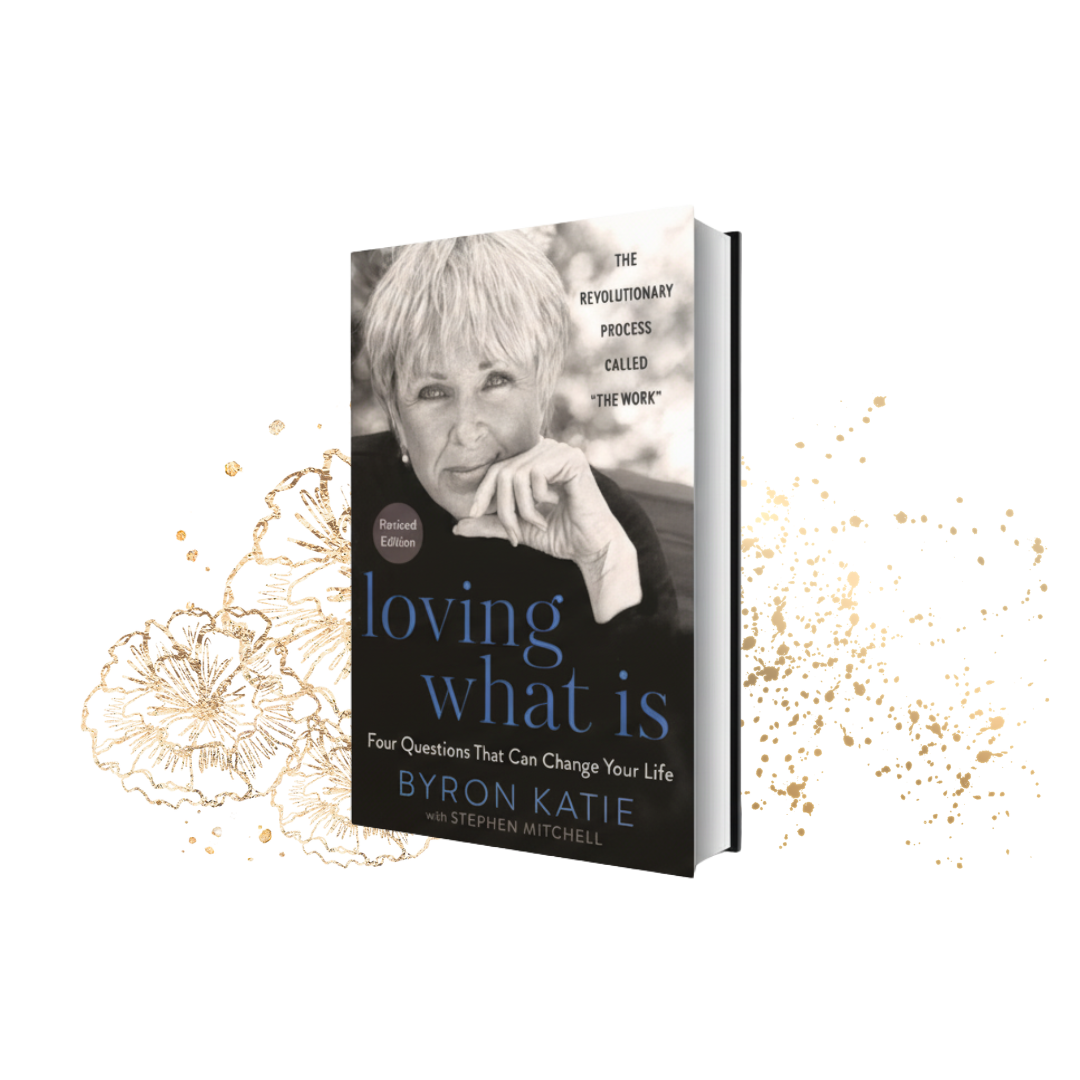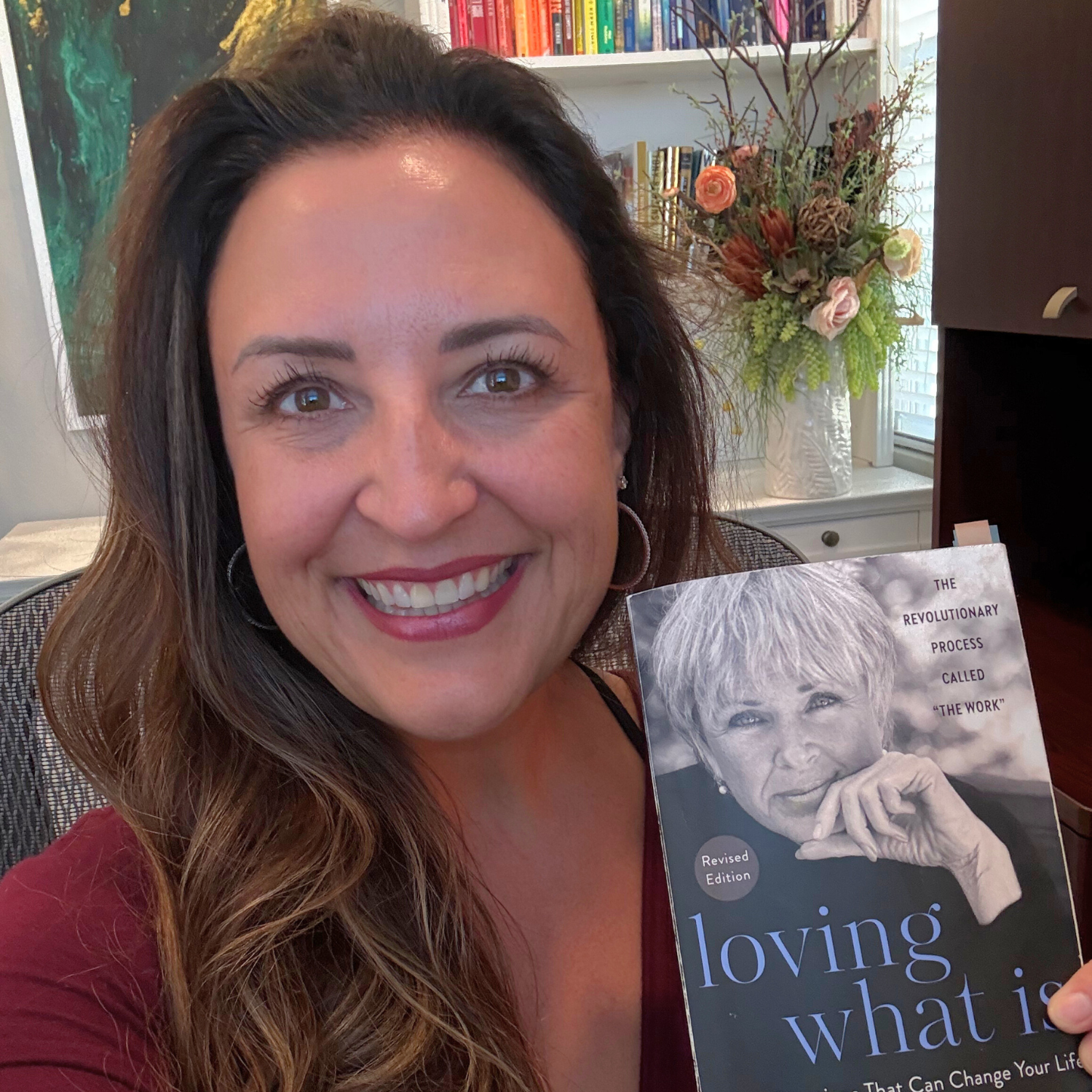Loving What Is
This Book Is for You If…
✔ You want more joy in each moment.
✔ You want to stop arguing with reality and find peace with what you can’t change.
✔ You want to improve your relationships.
Reading this showed me that suffering comes solely from my thoughts, and that freedom is just a few questions away.
Stop Arguing With Reality: Start Loving Life
Book Review & Reflection by Lindsay Smith, LCSW
Loving What Is: Four Questions That Can Change Your Life
By Byron Katie
Mood of the Book:
Liberating, Empowering, and Transformative
5 Gems to Fuel Growth…
Stop arguing with reality.
The shift I needed: Acceptance removes suffering and clears the path forward.
Reality doesn’t change because I wish it would.
On a recent drive to San Diego, the route looked clear; then traffic stopped. My mind said, “This shouldn’t be happening. I’m going to be so late.” I noticed how quickly tension built. I can’t change the traffic, but I can choose my next thought. I ended the argument with reality and focused on what I could do: breathe, loosen my shoulders, pick a playlist, and use the time to think through an upcoming challenging conversation. The facts stayed the same, and peace returned.
Acceptance isn’t approval—it’s clarity. When I stop adding a second layer of suffering, the story of how it should be, I’m able to see options I couldn’t see a minute before: take the next exit, call ahead, adjust the plan.
As Byron says, “When I argue with reality, I lose—100% of the time.” Peace first. Action next.
Suffering comes from our story, not reality.
The shift I needed: It’s not them; it’s the thought. When we question it, the pain fades.
Suffering shows up when we believe a thought that argues with what is. It’s never the traffic, the late friend, or the boss’s lack of recognition—it’s the story in our head that says, this shouldn’t be happening. Every painful thought is just a variation of that theme.
I went on a date recently where everything seemed to click—shared values, easy conversation, genuine laughter. At the end, I asked, “What are you looking for in a relationship right now?” He later told me he didn’t want to go out again because he thought first dates should stay light and playful, without heavier questions. My immediate thought was, “That’s a crazy reason not to see me again. He could have just said he didn’t want to answer.” Pain rose quickly—but not because of him. It was because of my thoughts about his response.
It’s not what someone says or does that causes suffering. It’s what we believe about it. The truth is, thoughts are harmless until we attach to them.
Once I saw that clearly, I let go of the story and felt peace return. Reality was simple: he wasn’t my person. And with acceptance came trust—if this door closed, God must have someone better for me.
Change begins with me.
The shift I needed: Suffering ends when I stop outsourcing my peace and own my thoughts.
If I believe my peace depends on someone else changing, I’ll always lose. We stay stuck in the victim role when we expect others to behave differently to make us feel better. That’s life happening to me, and it downplays my power.
When I was selling my counseling centers, anxiety consumed me. Deals stalled, revenue dipped, deadlines slipped. I felt powerless—like lawyers, buyers, and even my employees held my peace in their hands. My mind spun with stories: What if the deal falls apart? What if the terms change again? The more I clung to those thoughts, the more trapped I felt.
It was my attachment to these thoughts, not the situation or the thoughts themselves, that caused my suffering. Freedom comes when I take responsibility—when I notice my thinking, question it, and shift my perspective. My peace was never in their hands. It was always in mine.
No one else can set me free. Only I can.
Releasing painful thoughts is possible.
The shift I needed: Peace is available the moment I question my thought instead of defending it.
One of the most freeing questions in Byron’s process is the fourth one: Who would I be without this thought? By the time you reach this step, the first three questions have already softened resistance and created space to see clearly. That’s why this step lands with such power—it feels possible.
I once had a team member drop the ball on a major project. I stayed up all night finishing their work, stewing in thoughts like, “This could ruin our reputation. They should have planned better. How selfish and unprofessional.” The more I repeated those thoughts, the more my stress and resentment grew.
Then I asked: who would I be if I couldn’t believe any of that? Instantly, I felt lighter. The reality was clear: the work was done, the deadline was met, and I still valued this person. My anger dissolved into compassion.
This practice shows us that suffering doesn’t come from what others do—it comes from what we believe about it. Fear fades when we return to the present, instead of replaying the past or forecasting the future. The present moment holds no fear. We lose peace only when our minds run to the past or the future.
Reality is kinder than my resistance.
The shift I needed: Peace comes when I drop the “should” and meet reality as it is.
Sometimes the simplest path to peace is to follow the quiet voice inside without argument. It says: make the bed, wash the dishes, pick up the dirty clothes. When I resist, I slip into stories like, “Why should I have to be the one to do this?” That thought, not the chore, is what drains my joy.
The reality is clear—the clothes were left on the floor. I have two options: stew in resentment or bend down and put them in the hamper. It takes seconds, and peace is immediate when I stop attaching to “should.”
At first glance, this practice might feel too simple. But that’s the beauty of it: the same principle applies whether the issue is clothes on the floor or a loved one who let me down in a bigger way. Once you understand the full process Byron teaches, you see how powerful it is. The question is the same every time: keep arguing with reality—or accept it, question my thoughts around it, follow my inner guidance, and gain peace?
My 3 Core Ratings (1-5)
This was an engaging read, packed with stories and examples ranging from small everyday moments to big life challenges. At the same time, it was a lot to wrap my mind around. The joy came from realizing that change is truly possible and seeing it play out across so many different scenarios.
This book gave me tools to quickly shift how I respond when I feel frustrated or upset. Instead of staying stuck, I move through the questions and turnarounds, and most of the time my mood shifts quickly. It’s a tool I can use in real time, and that makes it deeply transformative for me.
Applying this practice felt very doable, especially with all the examples showing how it works. At first it was a bit tedious as I learned the steps, but with repetition it felt natural. The more I practiced investigating my thoughts, the easier and more compelling it became, because I could feel the peace it created.
Mic Drop Moment:
“I’m a lover of reality…because when I argue with it, I lose inside myself.”
– Byron Katie
Notes, Nudges & Nuggets:
✔ I 100% recommend reading this book to learn the four questions and turnarounds Byron teaches. This review gives you a glimpse of what’s possible, but it doesn’t teach the method itself. Byron lays it out so beautifully in the book—it’s absolutely worth the read so you can put it into practice.
✔ Notice whose “business” you’re in: yours, someone else’s, or God’s. Peace comes the moment you step back into your own business.
✔ Every stressful moment can be seen as a gift. It points to the thought that’s ready to be questioned and released.
If you’re thinking about picking up this book – or doing any Amazon shopping – clicking through my link helps support future reviews at no extra cost to you. Thank you so much for your support!
Final Reflection:
Life won’t always match the stories we tell about how it should be.
But peace is always available when we stop fighting what is.
_________________________
What’s one area of your life where you can begin to accept what is, just as it is right now?
Want to keep discovering books that have the power to change how we live, lead, and love?
If you'd like to keep growing alongside me, sign up to get thoughtful personal and business development book reviews delivered straight to your inbox.
Inspired by something here?
I’d love to hear how it connected with your journey - feel free to drop me a note.















